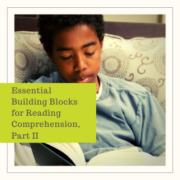Use Student Work to Increase Motivation
I, like many others, fondly remember the pride I felt when I walked into the classroom and saw my work hanging up on the wall. Aside from the glittery star stickers and “great job!” written in impossibly perfect teacher handwriting, the notion that my hard work was good enough to be hung on display was exceptionally satisfying. For me, that instance of recognition went a long way in terms of motivation—it solidified the belief that my effort and success mattered to someone other than myself.
As educators, we can also foster this mindset for our students. Beyond displaying student work, teachers can utilize numerous instructional strategies to highlight this work in the classroom.
Error of the day
This is one of my personal favorites because, as a self-proclaimed math loather, this exercise helps to illuminate the value of our math errors. Also, from a teacher’s perspective, the activity takes minimal prep time.
- Teacher will provide students with a daily warm-up sheet that includes one math problem. The question should relate to a unit concept that the teacher has already taught, as to avoid discouraging students with an unfamiliar math problem.
- Teacher will collect and sort the warm-ups into two piles: correct answers and incorrect answers, with the intent to choose an incorrect example with a common or understandable error. (Often times, these common errors are made by several students.)
- Using a Promethean document camera, or by taking a photo of the student sample and projecting it on the board, the teacher will display a student’s incorrect warm-up. Be careful NOT to show the student’s name; the point is to highlight a common error and explain it without embarrassing anyone.
- The teacher will use the sample to go through the problem step by step, carefully hinting at where the student took a misstep.
- It is important that the teacher help students dissect not only where the error occurred, but also the thinking behind that error.
- After the collaborative error analysis, the teacher should thank the anonymous student for his contribution, specifically mentioning how errors allow for growth.
Writing samples
A great way to celebrate student writing, while also discussing an essay’s strengths and weaknesses, is to ask students to create a scrap essay using various paragraphs from multiple students’ essays. The activity would look something like this:
- After collecting essays, teacher would identify strong examples of intro paragraphs, body paragraphs, and concluding paragraphs.
- Without labeling the samples or leaving any written feedback yet, the teacher would crop the essays into separate paragraphs and distribute them to small groups.
- Collaboratively, students would piece together an exemplary essay using the student sample paragraphs.
- Ideally, the puzzle-pieced essays would include multiple students’ work.
- The activity could be extended by having students then analyze the various strengths of each group’s newly constructed essay using the assignment rubric.
Connect with parents
Another underutilized way to celebrate student work and increase motivation is to snap a quick picture of the student’s work or project and email the photo to parents. In this instance, teachers will want to be sure that the assignment has been graded and includes positive written feedback. This allows parents the opportunity to see exactly why this work sample was exemplary. Of course, any positive parent contact helps to motivate students. However, taking the extra step to display the great work to parents can go a long way.











